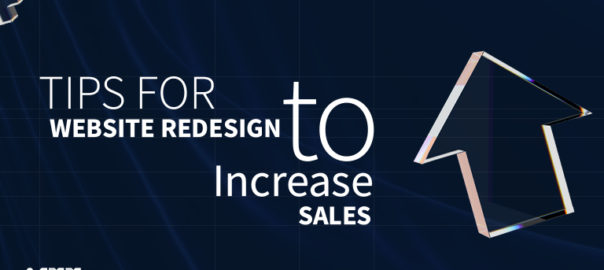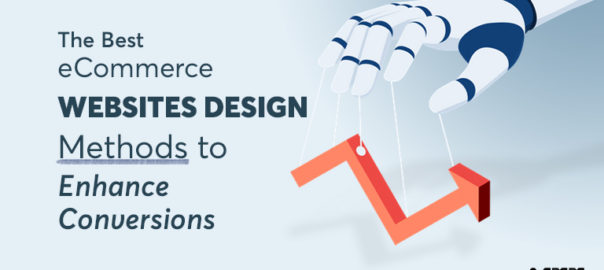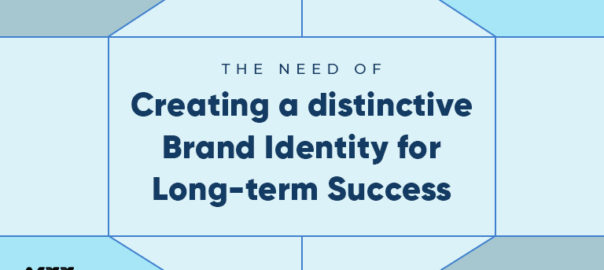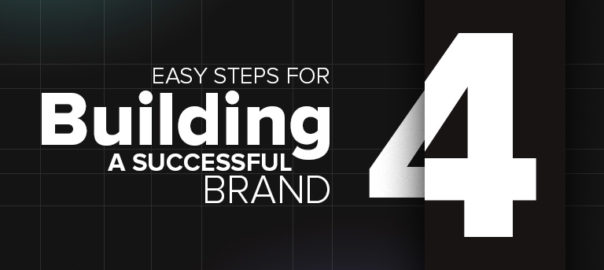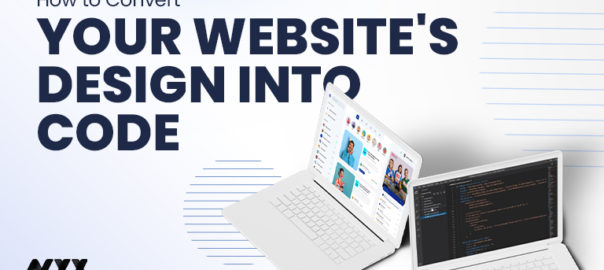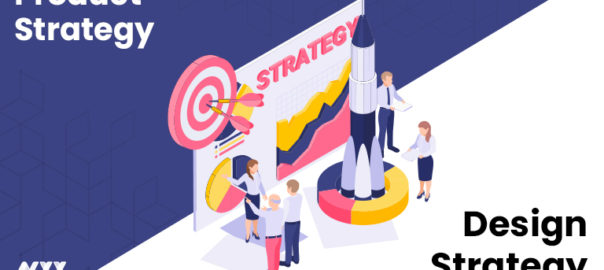A robust brand identity is crucial if you want to grow your business and improve your company’s reputation. Brands that effectively market their products through design and brand building services tend to do well. Establishing a solid brand identity is the first step in any successful advertising or brand-building campaign. Even if your company has the best employees and services available, it may have trouble standing out from the competition if its branding fails to convey the level of authority and experience it actually possesses.
Brand Identity: Overview
How people see you as a brand is extremely important. Imagine this: whenever you meet a new person, you immediately form an opinion of that person in your mind. The more time you spend talking to someone, the more in-depth your perception of them becomes. An impression of their character begins to take shape in your mind. Obviously, all of your future communications with this individual will rely on your initial impression and personality evaluation.
Your company’s image is very similar. The positioning, marketing, and visual identity of your company are all manifestations of the essence of your brand. But remember, it takes time to build a reputable brand. A brand strategy, on the other hand, is a well-thought-out plan for developing and promoting a brand. If you want to set yourself apart from the competition and have a deeper understanding of your brand’s intended audience, you need a branding agency.
Advantages Of Establishing A Solid Brand Identity
Building a recognizable brand for your company is crucial to its long-term success. Reputation, differentiation from the competitors, and value projection are all assisted by solid branding, which in turn helps bring in the right customers. Listed below are justifications for the significance of having a strong brand identity:
Helps Your Business Appear Larger
Customers will feel more confident in doing business with you if they perceive a unified, polished brand across all of your marketing collateral. Customers seek businesses that can provide them with the tools they need to succeed. They will spend more since they know they’re getting a reliable service provider. If you do not portray a strong brand identity in any form, they will perceive you as insignificant and unworthy of their attention.
Enhances Your Value
Many consultants and coaches who work independently create a name for themselves instead of their company. Getting famous could be a good thing if that’s your ultimate objective. However, you should create a brand for your company if you intend to grow or sell it in the future without attaching your personal identity to it. A distinguishing brand is going to be among the assets considered during a sale or merger.
Motivates People to Stick With You and Gains Your Trust
Differentiating your company from the competition can be accomplished by developing a distinctive brand identity through the assistance of professional branding services. Establishing an emotional relationship with clients requires a powerful brand that communicates your values. A stronger bond with your consumers means they are more likely to stick with your business over the long run.
Transmits Stability
Having no brand or a self-created brand gives the perception that the company won’t last, even if you are the greatest and most experienced professional in your area. Creating a brand for your company helps send the message that you intend to continue in business for the long term. Consistent exposure to a brand with a clearly defined identity leaves an impression that lasts. You may dispel any doubts about your credibility by presenting yourself and your beliefs clearly.
Enhances The Brand Recognition Of Your Company
Customers are more likely to remember a brand if they are exposed to it in a consistent manner. A customer’s propensity to inquire about your company increases in proportion to the frequency with which they discover your brand. Each opportunity to communicate with a potential customer is a golden one for building rapport and solidifying your brand in their mind.
Exhibits Dedication and Self-Respect
Establishing a particular brand identity demonstrates enthusiasm for your company and dedication to its success. Customers will have more faith in your ability to fulfill their needs since a company that cares about its success will always under-promise and over-deliver, earning confidence and loyalty with each transaction.
How To Create A Powerful Brand Identity For Your Company
Developing a company’s identity involves more than just picking a color scheme or employing a creative agency in India to create something catchy. Below are the 7 processes involved in developing a brand identity, from developing a brand style guide to identifying the ideal clientele.
Company Mission Statement
Let’s say you run a company that produces pens used for calligraphy. Obviously, you want your pens to be the best in the world. But what are you hoping your company would achieve by producing such fantastic pens? To what extent would you like to encourage people to continue using pen and paper even as technology advances? Is it to assist customers in writing effectively? Get clear on why your business exists, and let it drive the conversation behind the design of your brand’s identity.
Vision For The Future
If you’ve made the best pens in the industry, how do you want your customers to feel about your brand? Where do you hope your business will be in five years, and what will you do to get people excited about following you there as loyal patrons? You can utilize a vision statement outlining your company’s five-year strategy to shape how customers see your brand.
Check Out the Rivals
Analyze who else is out there doing what you’re doing. What are your thoughts on those corporations? When they think of your firm, what do you want them to feel? What kind of an impression does their logo make? Be sure to look back at the industry’s highs and lows. Examine the downfalls of unsuccessful businesses to learn from their mistakes. Then, analyze the successful businesses to see what made their products or services so appealing to customers.
Get Your Word Out
The visual identity of a company is only one part of a comprehensive brand strategy that can be taken care of by a web design company. The company’s tone is also an important factor. Do you want customers to think of your firm like they’re reconnecting with an old friend? Or are you hoping they’ll think your business is considerate and simple to work with? Your brand’s character should evoke in consumers the emotions you intend them to experience as a result of purchasing your goods.
Don’t Try to Imitate Others
When it comes to developing a company’s name in the market, the proverb “imitation is the best form of flattery” doesn’t apply. Instead, what separates you from those who have gone before you is the degree to which you can add something fresh to the field. You definitely don’t want to be the “next Coke.”
You need to aim for something totally different. Something completely novel and unprecedented. It could take time, but you shouldn’t try to imitate a competitor’s brand strategy just because it’s worked for them. Ultimately, you have to strike out on your own.
Move Past the Logo
Coca-Cola’s logo is a big reason for the brand’s success. If you look closely, you’ll notice that the corporation makes use of essentially every sense to advertise its products. Logos developed by UI design services are great for getting new customers familiar with your business, but they shouldn’t be the only way you make an impression. Logos are only the beginning of a comprehensive brand identification strategy.
Make Sure Your Message Is Consistent
It’s crucial to invest time and energy into developing a distinctive brand identity, and just as crucial to see that identity translate into financial success for your business. Everything from your company’s logo to how people engage with it online is impacted by brand identity design. There needs to be uniformity in the way your company’s information is presented and communicated across all channels. Keep in mind that maintaining a steady brand voice is an effective way to build a reputation.
Top 3 Brand Identity Examples That Businesses Must Analyze
Mastercard
The red, yellow, and orange color combination of the Mastercard logo—two intersecting circles—is instantly recognizable. Mastercard’s brand image has evolved over the years. Actually, only a few years ago it revealed a totally new, more contemporary look. You may feel that the shift in brand identity didn’t even occur, and that’s exactly the point. To keep your audience engaged, you need to inject some modernity into your brand’s key qualities and elements without losing what makes your company unique.
Coca-Cola
Simply reading the name “Coca-Cola” certainly conjures up images of a cold, refreshing can being popped open. Coca-Cola, or “Coke” as many of us call it, is among the most well-known brands in the world. This is not a random occurrence. Coca-Cola’s marketing and sales success can be attributed to the company’s ability to connect with consumers on an emotional level and create a long-lasting impact.
Coca-Cola’s branding, from packaging to commercials, is built entirely around appealing to consumers’ desire for familiarity, connection, and a warm, welcoming feeling. Some of the brand’s most famous advertisements include “Share a Coke,” “Open Happiness,” and “Taste the Feeling.” Every Coca-Cola ad has its own unique tone, but they all serve to reinforce the company’s larger mission to “refresh the world and make an impact.”
McDonald’s
McDonald’s, the American fast-food restaurant best known for its hamburgers, french fries, and trademark golden arches, is an essential example of effective brand identification. McDonald’s brand strategy stands out because of how well it caters to its demographic. Their logo, packaging, and overarching brand message and tone are all created with the intended audience in mind.
Every customer, regardless of how old they are or where they come from, has the same experience at McDonald’s. The reliability of their products and the consistency of their brand’s visual identity make them a reliable choice. The company has effectively adapted to the tastes of consumers all across the world by employing regional characteristics and fragmented advertising campaigns.
Bottomline
Brand identities are made up of more than just a company’s logo and fonts; they also include the colors and other visual cues that consumers associate with that brand. Brand identities aid in making a name for themselves in the market, which in turn strengthens connections with consumers, employees, and other target groups. Keeping your brand’s identity consistent across all touchpoints is essential if you want to influence the opinions of your target demographic. Reach out to our experts today to know more.
Read more about successful brand building here.


